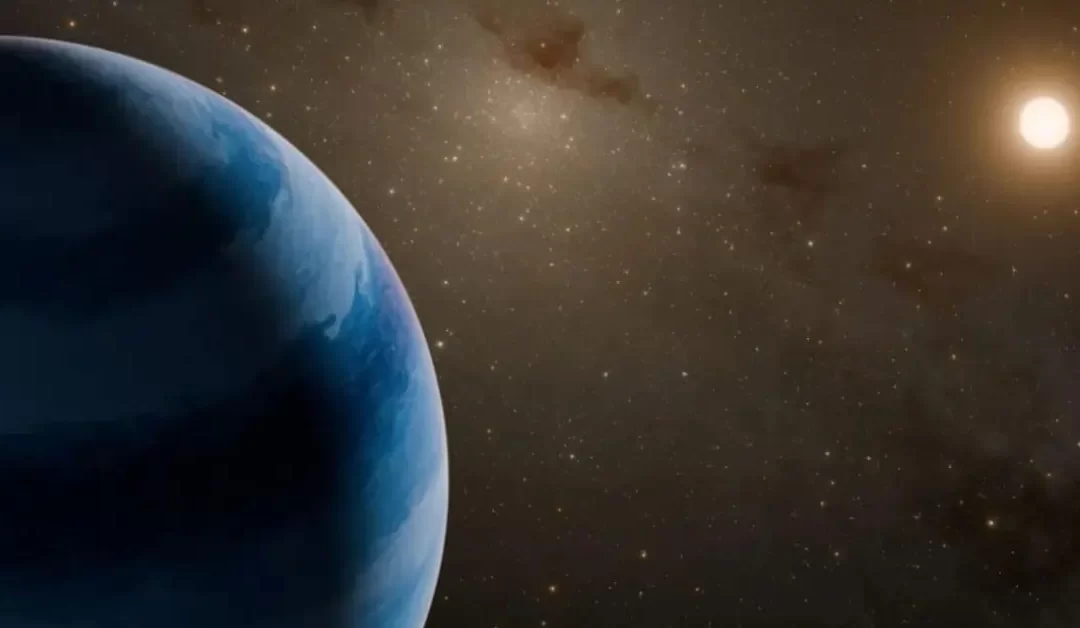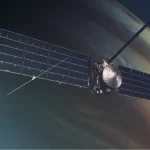Astronomers may have identified a unique planetary system speeding through the Milky Way at an astonishing pace. If confirmed, this would set a new record as the fastest-moving exoplanet system, traveling nearly twice the speed of our solar system. According to the latest news, this planetary system moves at an estimated speed of 1.2 million miles per hour (540 kilometers per second).
Sean Terry, a postdoctoral researcher at the University of Maryland, College Park, and NASA’s Goddard Space Flight Center, explained, “We believe this is a super-Neptune world orbiting a low-mass star at a distance comparable to the orbits of Venus and Earth in our solar system.” However, given the faint nature of the star, it falls outside the habitable zone. If confirmed, this would be the first planet found orbiting a hypervelocity star.
The discovery, detailed in a paper led by Terry and published in The Astronomical Journal on February 10, is already making waves in the field of exoplanet research.
The Star on the Move
The first signs of this unusual planetary system were detected indirectly in 2011. Scientists reviewing archived data from the Microlensing Observations in Astrophysics (MOA) project identified light signals indicating the presence of exoplanets. MOA, a collaborative research initiative utilizing the University of Canterbury Mount John Observatory in New Zealand, specializes in microlensing surveys to detect celestial bodies beyond our solar system.
Microlensing is a fascinating astronomical phenomenon where the gravitational field of an object bends the light from a more distant background star. This creates a natural magnification effect, revealing objects that would otherwise remain unseen. The 2011 signals pointed to a pair of celestial bodies, one significantly heavier than the other, but the exact nature of these objects remained uncertain.
David Bennett, a senior research scientist at the University of Maryland and NASA Goddard, co-authored both the new study and the original 2011 research. “Determining the mass ratio is straightforward,” Bennett noted. “However, calculating their precise masses is much more challenging.”
Unraveling the Mystery
Two possible scenarios emerged from the initial analysis: the detected objects could be a star with 20% of the Sun’s mass accompanied by a planet roughly 29 times Earth’s mass, or a rogue planet about four times Jupiter’s size with a much smaller moon. To determine the more likely explanation, astronomers turned to advanced data sources, including observations from Hawaii’s Keck Observatory and ESA’s Gaia satellite.
If the objects were a rogue planet and its moon, they would remain invisible, blending into the darkness of space. However, if the alternative hypothesis was correct, scientists expected to locate the star while its orbiting planet would remain too faint to detect directly.
Their search yielded a strong candidate located approximately 24,000 light-years away, within the densely packed Milky Way galactic bulge. Comparing its position from 2011 and 2021, researchers confirmed its extraordinary speed. If additional measurements reveal movement toward or away from Earth, its true velocity may exceed the galaxy’s escape speed of 1.3 million miles per hour (600 kilometers per second). If that is the case, this planetary system is bound to leave the Milky Way and enter intergalactic space in the distant future.
Future Investigations
“To confirm the newly identified star’s connection to the 2011 microlensing signal, we need another year of observations to track its motion,” Bennett stated.
Aparna Bhattacharya, a research scientist at NASA Goddard and the University of Maryland, explained that if the star remains stationary in future high-resolution observations, it would favor the rogue planet and exomoon hypothesis. If, however, it shifts position, it would confirm that the observed star is indeed part of the system that caused the original signal.
With technology news today focusing on advancements in space exploration, NASA’s upcoming Nancy Grace Roman Space Telescope is expected to play a crucial role in solving these cosmic mysteries. This advanced observatory will conduct a large-scale survey of the galactic bulge, combining wide-field imaging with exceptional resolution.
“In this case, we relied on MOA’s broad field of view and later followed up with Keck and Gaia for high-resolution data,” Terry explained. “Roman, however, will handle everything from detection to analysis in a single mission.”
The discovery of this high-speed exoplanet system offers invaluable insights into planetary formation and movement within our galaxy. As astronomers continue to refine their observations, this system could reshape our understanding of hypervelocity stars and their planetary companions, marking an exciting breakthrough in space research.































